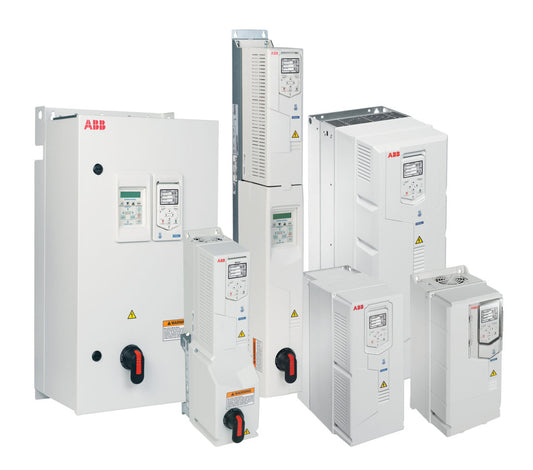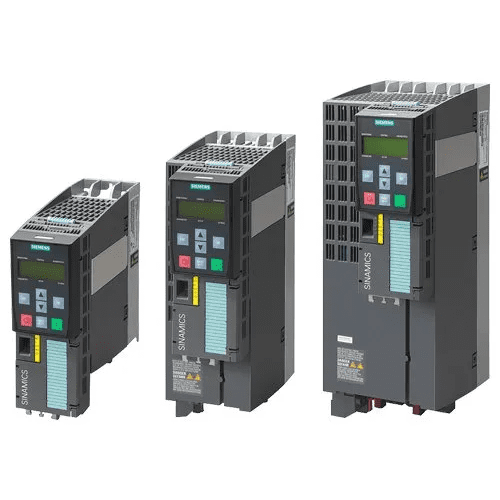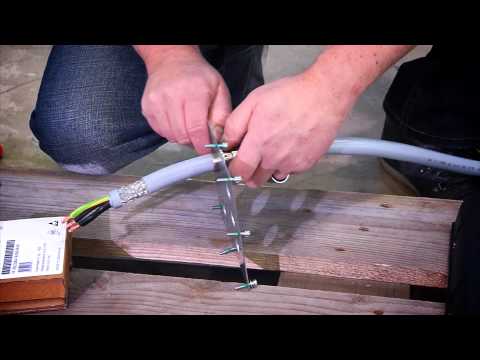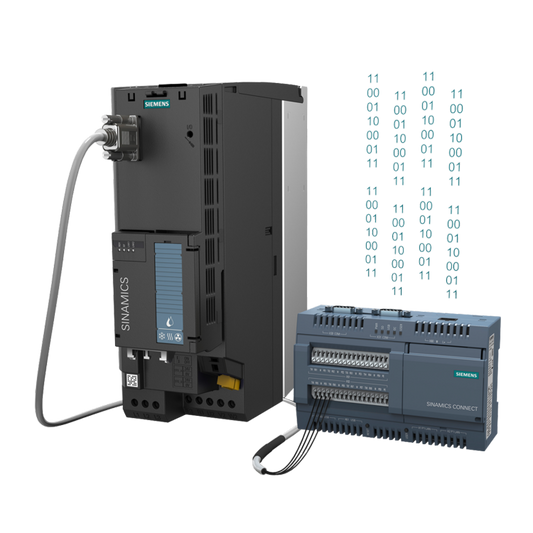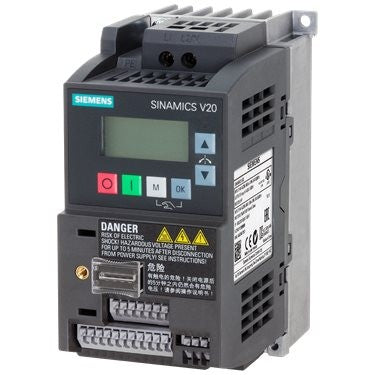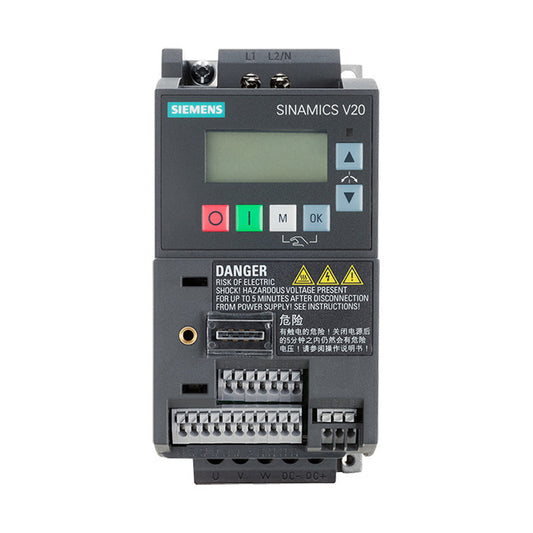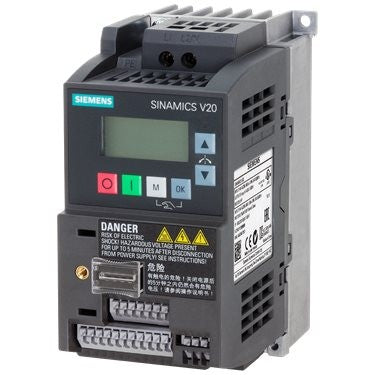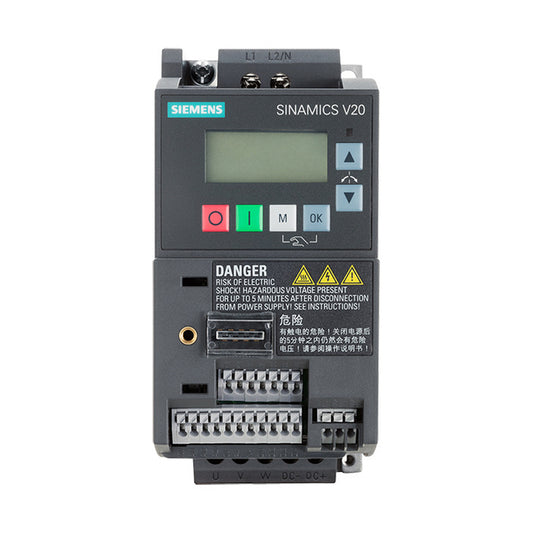Collection: Variable Speed Drive
Frequency converters or also named variable frequency drives are electronic devices that convert a (more or less) fixed frequency and voltage into a variable frequency and voltage. This devices allow electric motors to be operated with a variable speed.
Frequency-controlled drive solutions ensure movement in almost all industries. The huge range of applications contrasts with a large number of drive components. With the help of a few basic explanations and tips for handling frequency converters, you can easily select the optimal drive system for your application in no time at all.
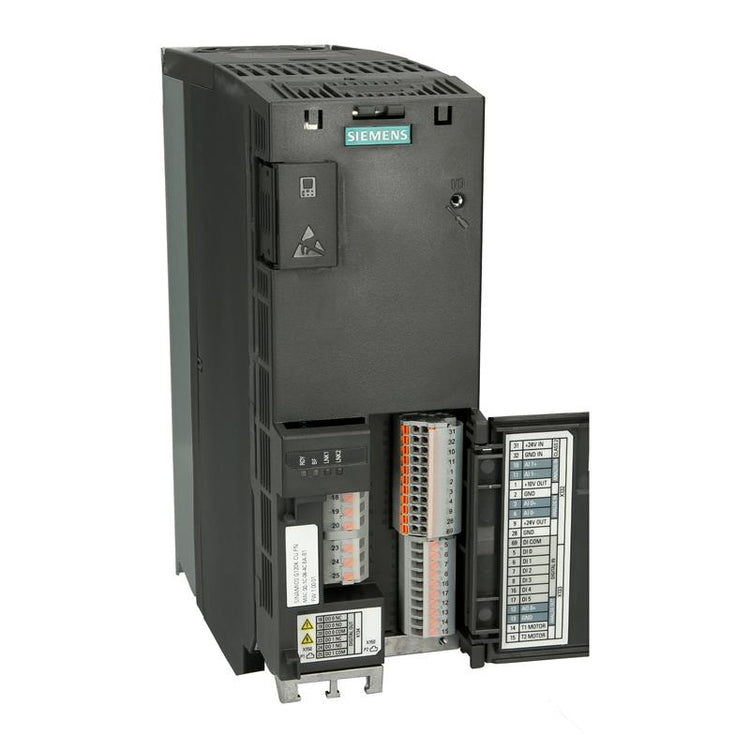
-
ABB drives for HVAC (ACH580)
Vendor:ABBRegular price From RM1,550.00Regular priceUnit price / per -
SINAMICS G120P (VSD)
Vendor:SiemensRegular price From RM5,814.00Regular priceUnit price / per -
SINAMICS G120X
Vendor:SiemensRegular price From RM2,331.00Regular priceUnit price / per -
SINAMICS V20, Three Phase
Vendor:SiemensRegular price From RM2,102.00Regular priceUnit price / per -
SINAMICS V20, Single Phase
Vendor:SiemensRegular price From RM1,084.00Regular priceUnit price / per
All you need to know about Variable Speed Drives
Frequently Asked Questions
What are frequency converters / variable frequency drives used for?
Today, frequency converters are used practically everywhere to operate single-phase and three-phase electric motors with a variable speed. And not just in industrial environments, but in everyday life. Starting from very low power ratings to control washing machine drums up to medium power ratings for pumps used in municipal water supplies.
Variable frequency drives are used in the industrial landscape for the following applications, for example:
Pumping, ventilating and compressingPositioning, processing, moving and machining
These functions are used in many industry sectors:
Food & beverage industryAutomotive industryHeating, ventilating and air conditioning (HVAC)Water and wastewater industryPaper industryOil & gasChemical industryLogisticsWind turbines, hydroelectric power and photovoltaic systemsMarine
Motor starter, soft starter, frequency converter – how do I select the optimum solution for my specific application?
Motor starters – also called soft starters or soft starting devices – are not frequency converters, but devices that simply reduce the voltage. You use them if your motors are connected to line supplies that are either very weak, or to which other loads are connected that are very sensitive to voltage fluctuations. On the other hand, you must use a frequency converter if you wish to continuously control the speed of an electric motor.This offers some significant advantages: Flexibility, process optimization and energy saving.
What types of frequency converters / variable frequency drives are there?
• Low-voltage converters for motor voltages in the 230 V – 690 V range (single phase, three phase – alternating voltage or three-phase voltage)
• Medium-voltage converters for motor voltages in the 2.3 kV – 13.8 kV range, especially for drive power ratings > 2.5 MW
• DC converters for DC motors comprising a controllable rectifier
• Safety extra-low voltage converters for motor voltages from 24 V DC up to 48 V DC
• Servo drive converters
Many terms are used in drive technology relating to converters – what do these terms mean?
You can often see terms such as frequency converter, converter, rectifier, inverter, drive converter etc. in literature:
• VFD (variable frequency drive)
• ASD (adjustable speed drive)
• VSI (voltage source inverter)
• CSI (current source inverter)
Here is a brief explanation of some of the commonly used terms used in conjunction with frequency converters:
• Frequency converters to convert the frequency of an alternating voltage or three-phase voltage (single-phase or three-phase) into an AC voltage or three-phase voltage with a different or varying frequency.
• A rotating frequency converter is an electromechanical arrangement comprising a motor and a generator, also called motor-generator set.
• A converter/frequency converter is an electric circuit with which one or several electrical variables can be changed, for example voltage, current and frequency.
• A rectifier is a circuit made up of components to convert AC current or three-phase current into DC current. Converter arrangements, which are used for energy recovery or for braking, must have an active converter at the input that is equipped with controllable power semiconductors.
• Inverters are used to convert DC current into AC current or three-phase current.
• Pulsed converters or PWM converters/inverters (PWM: pulse-width modulation): Using this technique, by suitably selecting the pulse and pause duration (duty cycle or also called mark-space ratio), an output voltage can be obtained. Depending on the pulse frequency, the mean value of this voltage has an almost perfect sinusoidal waveform.
• Voltage-source DC link converters comprise an uncontrolled or controlled rectifier, a DC link with capacitors and an inverter (motor-side inverter). The motor-side inverter (or also just called inverter) generates a three-phase system with adjustable frequency and voltage that impresses a current, which in turn develops the specified motor torque.
• The two main components – line-side converter and motor-side inverter – are connected in the DC link. For current-source DC link converters, this comprises a reactor to smooth the current, and for voltage-source DC link converters, a capacitor to smooth the voltage.
What is the relationship between a frequency converter and an electric motor?
The speed of an electric motor depends on the frequency of the supply voltage and the number of poles that the rotor has. These attributes are fixed (with the exception of pole-changing motors – sometimes called multi-speed motors) and cannot be changed.
Using a frequency converter, the motor voltage and its frequency can be controlled over a wide range, and in turn, its speed.
Operated with a converter, the motor speed can be controlled, the motor can be braked and energy can be recovered (regenerative feedback into the line supply).
What is required when engineering a drive system?
In addition to a frequency converter and motor, several other components are required to engineer a variable-speed drive system:
• Line contactor or circuit breaker
• Power cable between the converter and motor
The following components are possibly required to engineer a variable-speed drive system:
• Fuses at the inputLine reactor or line filter
• Output reactor or sine-wave filterCommunication between the converter open-loop control and a higher-level control system
• Air ducts for the cooling air intake and discharge for the converter, possibly with filter
• Cooling system for water-cooled converters
Why do I save energy and costs when using a frequency converter?
As a result of the closed-loop control, the motor precisely provides the power that the process requires – and no more. For applications where braking is required, you must select a converter that can feed back the electrical energy – that is generated when braking – into the line supply.
When do I require a separate braking resistor when using a frequency converter?
You use a braking resistor if your drive system must be braked or brought to a standstill – especially when a fault situation is involved. Resistors located in the DC link absorb the drive train kinetic energy and convert this into heat (thermal energy).
You should not confuse a braking resistor with a holding brake. A holding brake only ensures that the driven machine that you are controlling does not cause the drive train to move (for example, important for cranes and inclined conveyor sections).
When do I require a separate filter when using a frequency converter?
Two filter types come into consideration when using a frequency converter:
• Line filters prevent harmonics, generated by a frequency converter, from being injected back into the line supply and disturbing other loads connected to the same line supply.Depending on the requirements of your system or your power utility company, line filters can either be LC filters (sine-wave filters) or line reactors. The latter are sometimes called commutating reactors.
• Output filters protect your motors against the steep voltage edges inherently generated by an inverter. These filters are required if the cable between the inverter and the motor is very long.In cases such as these, reflections and voltage transients can occur on cables, which can destroy the insulation of your motor. You can use either sine-wave filters or dv/dt limiting reactors.
Frequency converters and standards, what do I have to look out for?
In addition to product standard IEC 61800-5-1, which applies to adjustable speed power drive systems (variable-speed drive systems), standards, regulations as well as country-specific specifications, which are specified by users, plant and system operators and power utility companies, must be increasingly taken into account. These include requirements relating to the line quality for example. The predominant reason for this is that increasingly active converters (with controllable power semiconductors) are being connected to grids, for example, for photovoltaic and wind turbine systems. Other examples include Namur connections, to address connection requirements relating to areas of the chemical industry, as well as requirements relating to ruggedness as are demanded for maritime applications, and which are verified in the form of marine certifications.

